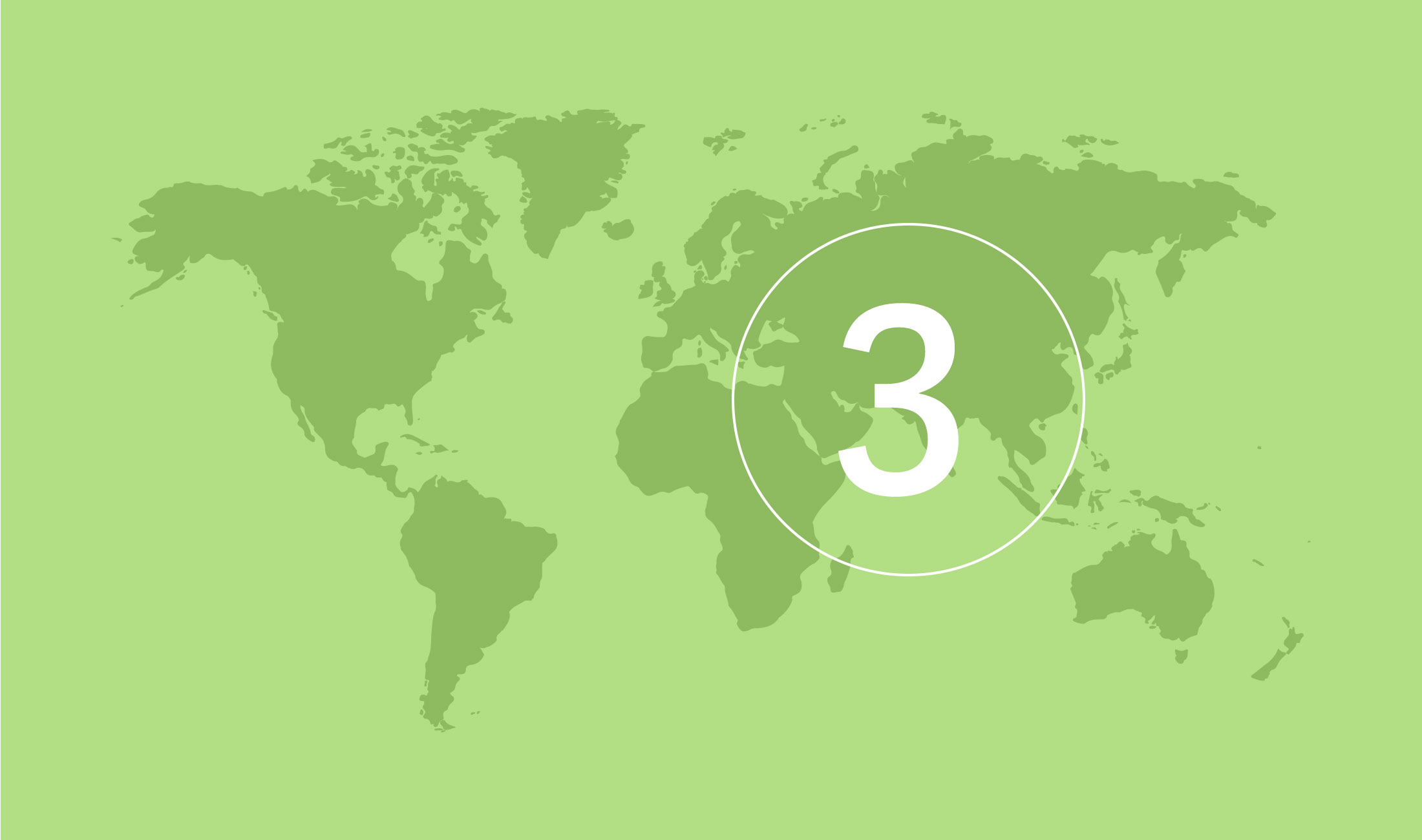
Mexico
Category
3
- 0
- 1
- 2
- 3
- 4
- 5
- 6
- 7
| Risk type | Short | Long |
|---|---|---|
| Sovereign |

|

|
| Public |

|

|
| Bank |

|

|
| Corporate |

|

|
The icons indicate EKN's risk assessment.

No policy established

Normal risk assessment

Restrictive risk assessment

Normally off cover

OECD or EU countries
Country risk analysis
Country risk analysis archive
Country Risk Analysis of Mexico
The latest Country Risk Analysis of Mexico was issued in October 2024.
Financial integration with the world reduces country risk
Mexico is a large and relatively well-diversified economy. With a nominal GDP of around 1.8 trillion USD, the Mexican economy ranks as the 12th largest globally, second only to Brazil within the region.
A significant portion of economic activity still occurs within the informal sector, estimated to employ around 60 percent of the workforce. Informal work is prevalent in sectors such as agriculture, construction, and services.
Furthermore, Mexico is one of the world’s most open markets, with 14 free trade agreements covering more than 50 countries. Mexico’s advantageous geographical location next to the USA has fostered strong financial and trade links between the two nations, enabling a successful, export-oriented manufacturing industry that contributes over 30 percent of Mexico’s GDP.
The USA is the largest single export market for goods and services, absorbing more than 80 percent of cross-border trade, followed by Canada and China with just under three and two percent, respectively. A key factor in this extensive trade exchange is the USMCA free trade agreement between Mexico, the USA, and Canada, which replaced the former NAFTA agreement in 2020.
Exports primarily consist of machinery and electronic products (34 percent), vehicles or vehicle components (25 percent), and oil (seven percent). Economic integration with the USA also occurs through the labour market, with approximately 12 million Mexicans sending remittances back to Mexico each year, providing an important cash inflow for many Mexican households. In 2023, remittances reached a record level of 67 billion USD, nearly four percent of GDP.
Historically, tight and predictable fiscal and monetary policies over recent decades have maintained investor confidence and ensured access to international capital markets, even during periods of increased financial turmoil. Key elements of this framework include a floating exchange rate, a wellestablished inflation target, and relatively limited budget deficits.
Public debt is moderate, and the large export sector, combined with remittances from abroad, has led to manageable current account deficits, which are covered by foreign direct investment. International reserves are stable, and the Mexican banking system is well-capitalised. At the same time, the country suffers from high levels of corruption, weak rule of law, and a challenging security situation, with high levels of violence and cartels operating across large parts of the country.
Slowing growth rate and Sheinbaum’s direction
Mexico’s growth rate is expected to slow in 2024 and 2025, largely due to persistently high interest rates and reduced demand from the USA. The Mexican central bank, Banxico, is somewhat behind other countries in the region in its rate-cutting cycle, meaning that tight credit conditions will continue to weigh on heavily indebted companies and households for a while longer. At the same time, the IMF predicts that Mexico’s growth rate will rise to two percent per year over the next five years, exceeding the historical average and considered reasonable given the country’s income level.
On 1 October this year, Claudia Sheinbaum took office as Mexico’s first female president. Sheinbaum, who has a background as an environmental scientist and former mayor of Mexico City, belongs to the Morena party—a left-wing party that has dominated the country’s political landscape over the past six years under her predecessor, Andrés Manuel López Obrador (known as ‘AMLO’).
Morena’s majority in Congress provides Sheinbaum with favourable conditions for implementing her policies, which presents both increased risks and opportunities. Sheinbaum is expected to continue along a similar policy direction as her predecessor, with an emphasis on social programmes and an expanded state role in the economy, though possibly with a stronger focus on green energy transition. Maintaining economic growth is crucial for sustaining confidence and popularity, which somewhat limits the scope for more controversial reforms.
Mexico has been identified as one of the main markets to to benefit from the relocation of global value chains through the phenomenon of nearshoring. In the first quarter of 2024, foreign direct investment (FDI) reached record levels, and several companies have announced further investments. The majority of these investments were directed towards the manufacturing industry and financial services, with a significant portion focused on Mexico City.
That said, there are short-term risks and long-term challenges that could hinder positive trends from translating into actual economic development. In the short term, the US presidential election presents a factor of uncertainty, particularly if a change in administration leads to trade barriers or if the USMCA agreement undergoes significant changes during its review in 2026.
In the long term, Mexico continues to struggle with substantial structural challenges such as weak rule of law, corruption, and security issues. The constitutional reform adopted in September, which stipulates that the country’s judges will now be elected through direct elections, has faced widespread criticism for weakening the independence of the judiciary and raising concerns among investors. Developments in this area will be closely monitored moving forward.
Business environment
The security situation, marked by high levels of violence and organised crime, is perceived as the single largest obstacle to business operations in the country, according to the Global Competitiveness Index, followed by widespread corruption. In the World Governance Indicators survey, Mexico’s ranking has declined significantly over the past decade. Mexico was previously comparable to the regional average in most areas but has particularly fallen behind in areas such as corruption control and the rule of law.
However, the availability of financial information is generally good, and the openness to foreign investment and free trade remains substantial, facilitating international transactions.
The Mexican peso has long been freely floating and accounts for nearly two percent of global currency transactions, according to the Bank for International Settlements, making it one of the most liquid currencies among emerging markets. The peso is also convertible and transferable, allowing EKN to consider transactions financed in local currency.
The Mexican banking system is well-capitalised, with ample liquidity and controlled loan growth. Over the past five years, the proportion of nonperforming loans has averaged around two percent. As a result, the banking sector is considered to have strong capacity and resilience to manage unforeseen adverse scenarios. Mexican banks adhere to the international Basel III regulatory framework.
Of the six systemically important banks in the country, all but one are foreign-owned. This foreign ownership is regarded as stable and long-term, with support from parent companies likely if needed. Additionally, the state’s willingness and ability to provide support when necessary are considered high.
EKN’s policy
Standard risk assessment applies to both short-term (credit term <1 year) and long-term transactions with the state, other public buyers, banks, and companies. This means there are no predefined restrictions on issuing guarantees, and transactions are evaluated on their own merits without specific requirements or conditions.
EKN’s commitment and experience
Between 2019 and 2023, EKN issued guarantees in an average of 64 transactions per year, with a total value of 5.6 billion SEK. A large portion of exposure during this period relates to short-term credits (<1 year), with buyers primarily in sectors such as paper products, mining equipment, and the automotive industry.
EKN’s experiences with transactions involving the public sector have been positive. The state’s willingness to pay is assessed as strong, suggesting a favourable renegotiation environment if necessary. However, EKN’s experience with transactions involving regional and local public buyers is limited. In transactions with the private sector, EKN generally has the same positive payment experience as with the public sector.
Between 2000 and 2023, a small proportion (45 out of 1,029 transactions) required claims settlement. The Mexican legal system is, however, inadequate, and EKN has encountered instances where legal proceedings have been prolonged and costly. Regional differences can also be significant in how legal proceedings are conducted.
Compliance with contractual agreements is occasionally lacking, making it essential for Swedish exporters to ensure that parties draft thorough and clear contracts. Additionally, EKN has been informed by a reputable local law firm that creditors are in a better position in terms of asset recovery in leasing agreements than in instalment sales in the event of bankruptcy. However, EKN lacks recent experience to verify this in practice.
More for companies that want to export to Mexico

EKN's guarantees
EKN's guarantees reduce the risk of payment defaults and help banks support businesses. Which guarantee suits your needs?
EKN's guarantees
Guarantee guide
Are you unsure which guarantee is the best fit for your specific transaction? Try our guarantee guide.
Guarantee guide